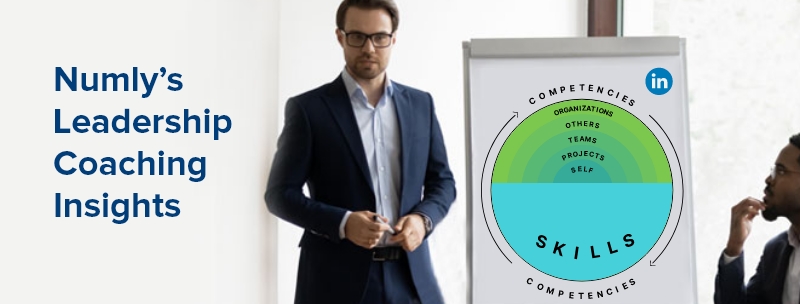The verdict is out − organizations across the world value leadership development and spend almost $14 billion annually in the USA alone towards these initiatives.
Leadership development is a big business. Leadership training is a $366 billion global industry. And yet, most leadership development programs don’t deliver the promised land of visionary leaders who will take businesses to unprecedented success.
We aren’t here to discuss the quality of the content you are using in such programs. There is an abundance of well − designed content based on some solid intellectual property.
So what could be the signs that your leadership development program is in the doldrums and in severe need of rescuing?
There’s a reaction but no action
Reaction without action is a waste of time. Leadership, if you look at it a little closer, is a verb. You discover it in action, and you demonstrate it in the application.
Unfortunately, what most organizations do is that they treat leadership programs like any other training program. Since you want to inspire leadership, you ask your participants to reflect on what Jack Welsh or Steve Jobs did to understand what they must do. But tell us this, does memorizing a football playbook ensure that you know where the next kick is coming from?
By any means, we are not saying that leadership programs shouldn’t seek information from what other successful leaders did. But what Steve Jobs applied to his unique scenario could be completely redundant in yours.
When leadership programs are designed this way, they do manage to evoke a burst of inspiration from the participants. You might even find these people talking about emulating the great things these leadership stalwarts achieved. But you’ll also note that none of these reactions translate into any action. The reason? Relevance and the fact that a few training programs aren’t going to deliver lasting results.
It makes sense to think of leadership programs as continuous ongoing efforts designed to help the participants increase their capacity to lead.
Context is king
Leadership development is a high touch, in−person effort that is hyper−focused on soft skills. Unlike training or coaching programs that focus on skill−based learning or certifications, leadership development programs need a great deal of context. It thus only makes sense to stay away from the ‘food menu’ approach to leadership
development, which is essentially figuring out what worked for others and then applying it in your work environment.
This approach is bound to fail as leadership viewpoints are different for every company. It depends on the company’s size, culture, and also the existing leadership structure, amongst a host of other things.
If your leadership development program is taking that proverbial ‘one size fits all approach’, it‘s time to re−evaluate your motivations and direction. Identify the traits that matter most to your organization and then create programs that help your employees develop those traits.
Your leadership pipeline is full of only high−performers
Wait? Isn’t that who the pipeline should be full of? We would agree but would like to add a caveat, as well.
Often high−performers are also something called ‘brilliant jerks’ − people who are exceptional at work but are bad co−workers. These are the people who may not share knowledge, may look for opportunities to belittle others, hog all the air time, and often believe that they are above people, processes, and the organization itself. When you put brilliant jerks in your leadership pipeline, you develop leaders who are brilliant jerks. And leaders set the tone of the company.
The reason why so many brilliant jerks make it into the leadership pipeline and then into leadership development programs is that the evaluation metric for leadership is myopic. Leaders not only need to be good at their jobs but also with people. They need a strong business sense and a host of other associated traits.
“But if not the brilliant jerks, then who?” You ask. We often end up in this conundrum because we are still basing these decisions over the proverbial gut feel along with a performance scorecard.
Instead, by leveraging assessments, you can easily identify high−potential employees who can fill up your leadership pipeline and actually do your leadership program justice.
The problem of pedagogy
Malcolm Gladwell, in his book Outliers, establishes that developing expertise, be it in any field, takes over 10,000 hours of practice.
If we were to go by this, then we can conclude that leadership development programs need far more time than a day−long or a week-long training program.
We must have a few fixes in place for this:
- Instead of training, we must focus on mentoring for leadership development. Mentors are people who have a proven track record, belong to the same or similar line of business, and have experience in building high−performing teams.
- Identify who should go into your leadership pipeline. By replacing gut feel with data taken from self−assessments gives you a peek into the strengths, weaknesses, and aspirations of your employees. It also helps you identify the mentoring needs of your workforce, keeping the diversity mix in mind. Women, for example, are great leaders and bring great value to the C−suite. Millennials want learning opportunities to grow and build their careers. Look beyond just the gut−feeland the annual employee report card to identify the right mix for your leadership pipeline.
- Allow your employees to develop leadership skills by giving them access to a host of mentors who can help them navigate the workplace challenges they face privately, without fear of judgment or any repercussions. Having a robust mentorship platform in place is a good starting point.
- Increase accountability. Leadership is not like a skills development plan. It has to be a continuous and highly accountable program. Leveraging advanced analytics is a good starting point, as is providing AI-driven coaching to help people develop the learning mindset. It is also this approach that helps you define your expected goals from your leadership development programs and lead to meaningful outcomes.
Leadership programs don’t just need good trainers. They also need mentors. People with the right skills, the right industry experience and the right attitude who will help your pipeline of future leaders learn new tricks and methods for problem−solving, unlearn and learn new processes, and help navigate the challenges that stand between their present role and their desired leadership position.
Give your leadership initiatives an AI edge with NumlyEngage™ Enterprise.

